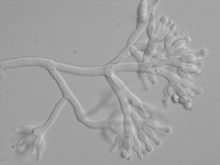The small mustard plant (Arabidopsis thaliana) produces specialized metabolites capable of selectively altering the microbial communities of the soil surrounding its roots to suit its own purposes.
While the findings may be useful in engineering beneficial root microbiota for sustainable agriculture, they may also, in part, explain why plants have evolved such vast metabolic diversification.
Plants can produce an enormous variety of specialized metabolites, which has allowed them to adapt to many ecological niches. An important environmental factor in their ability to thrive in a place is the microbiotic neighbours residing in the soil surrounding their roots.
Read Also

Defence investments could benefit agriculture
A bump in Canada’s NATO spending commitments could lead to infrastructure investments that would benefit rural areas
While it is estimated that a significant part of a plant’s photosynthetic energy is used to make root-derived molecules thought to be important in promoting the formation of distinctive root microbiota from surrounding soil, the underlying mechanisms concerning the establishment of these communities remains elusive.
Triterpenes, a large family of specialized plant metabolites with important functions in defence and signaling, have been shown to possess antifungal and antibacterial functions, which suggests a possible role for them in cultivating specific root microbiota. However, a substantial number of known root-expressed biosynthetic genes in plant genomes are uncharacterized and it’s unknown whether and which metabolites are used in forging favourable root microbiota.
Ancheng Huang and colleagues, who work at the John Innes Centre, an independent centre that focuses on crop research at Norwich in the United Kingdom, used metabolomic analysis and whole-genome sequencing to reveal a previously unknown triterpene biosynthetic network in the roots of A. thaliana.
According to the results, the biosynthetic pathways of the network can synthesize a variety of triterpene compounds, including three — arabidin, thalianin and TFAE — that were shown to impact Arabidopsis root microbiota.
According to the researchers, tests showed growth-promoting and antibiotic activities toward different microbiome taxa, supporting this biosynthetic network’s role in shaping A. thaliana-specific root microbiota.
“This question has fascinated people for hundreds of years and we’ve found this chemistry enables plants to direct the assembly and maintenance of microbial communities in and around the roots,” says professor Anne Osbourn of the John Innes Centre, a co-author of the study.
The researchers worked with the Chinese Academy of Sciences on the research.
This research follows recent thinking on soil health and cover crop establishment that says that root systems and biomass below the ground are more important than the volume of biomass produced above the ground.
This research was first published in Science in May, 2019.














